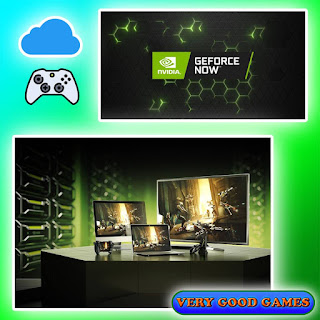Nvidia presented its cloud gaming service quite a long time ago, but only on February 4, 2020, GeForce Now came out from beta. This starting period wasn’t simple for GFN - the service solved many technical issues but faced a wave of legal obstacles and the following powerful dissatisfaction of some users.
I personally use Nvidia GeForce Now actively, and for me, it’s a very good service that gives access to a vast library of very good games. Here is my review of GFN in its “after-release-but-still-in-the-trial” state. This article is also a look at the very technology of cloud gaming.
Technical progress
GeForce Now is available for free or for $4.99/€5.49/£4.99 per month. Free accounts can play up to one hour and have to wait in queue for connecting to a server. Paid Founders accounts can skip the queue, play much longer without breaks, and have RTX (ray tracing) support in some games. Founders start paying after three months of a trial period, but the price after a year of use may change. The service is available on PC, Mac, and Android. Here is the official site of Nvidia GeForce Now.
Technically, the service is in very good condition. I tried out the free version, and the queue wasn’t too long. I activated the Founders subscription, and the connection happens in just a few seconds. While GFN was in open beta, time after time, the service was unavailable - I experienced disconnections or a poor connection. Somehow, the Nvidia guys managed to get rid of these problems. Everything is much better after the release.
Even with the Internet connection up to 100 Mb/s, there is no problems playing in the cloud through Ethernet. Very rarely, the video quality drops for a few moments or a game freezes and then catches the timeline by accelerating all the actions. Most of the time, the service has no lags at all - I often forget that this is cloud gaming, I just play a game as if it was running on my PC. Even competitive matches feel good with GFN - a Victory Royale in Fortnite really can be obtained through the cloud.
Still, the resolution may get better in the future. Some games are adjusted to the 1024x720 video settings, and with attempts to turn on Full HD, the picture lost the right proportion. For now, cloud gaming is not for those who look for high-end visuals.
Legal chaos
The business model of GFN seems to be perfect for end-users. You can play games you already own in your Steam/Epic Games Store libraries. Still, this perfection works only in theory. In practice, only a limited number of games are available on GeForce Now, and some big publishers decided to remove their products from the service.
Some users are totally unhappy with:
- inability to play games of Bethesda, Capcom, Blizzard, Square Enix, and some other companies. They were removed from GeForce Now after the publishers’ requests.
- inability to choose from which platform you want to play a game. Most of the titles are available only from Steam. Epic Store has only a few games. GOG is still not connected to GFN.
Throughout the first month of existence, the service got a few new games from Epic Store. This process continues. Probably, the best decision here would be connecting to GOG Galaxy - users can link their Steam, Epic, and GOG accounts to this platform, so there will be no issues with checking the ownership. But the legal chaos is complicated, it’s not like giving an idea and seeing it implemented. Let’s wait and see further development.
Currently, the library of GFN is quite impressive - for example, you can enjoy free-to-play titles (Fortnite, Apex Legends, League of Legends), many Valve games (Dota 2, CS:GO), some impressive races (Project Cars 2), space adventures (No Man’s Sky), lots of Lego games, and many others.
The launcher
It’s also worth mentioning that the interface of GFN launcher needs improvements. You can’t find here a list of all the games - only a few featured. Others are available only through the search bar.
The library of games is also inconvenient. All your titles are packed in one line, so you can see only the recent adventures and forget about the others.
Obviously, these issues come from the legal chaos, so the end of the trial period may bring a better launcher as well.
Nice parts of the GeForce Now application is the possibility to make screenshots and record gameplay videos. It may be better than using an external recorder.
Cyberpunk 2077
One of the best announcements of GeForce Now is including Cyberpunk 2077 to the library of this cloud gaming service on the release day. It’s only one game, but it’s huge, and this is good proof of the GFN prospects.
The market
It feels awesome to play modern games on an outdated laptop. This experience gives a real understanding that cloud technology is the future of gaming. Still, Nvidia GeForce Now proves that the technical aspect is not the only one that needs attention. Legal agreements with game publishers are needed to let a cloud gaming service live long and prosper.
The great business model of GeForce Now may become its weakest part - especially if the market plays its role of “behind the scene” agreements. Let’s take a look at the direct competitors of Nvidia in cloud gaming (from the earlier article Five game streaming services to play now):
- PlayStation Now has a very good price offer ($60 per year) and a lot of very good PlayStation 2/3/4 games. It would be easy for Sony to add new titles - the company has a huge portfolio of exclusives and the history of business partnerships with developers and publishers.
- Google Stadia has its own game store, so publishers may become very interested in the possibility to sell their games once again. Also, Google is ready to invest in attempts to enter the gaming market - it will not be a surprise to see some new exclusive deals for Stadia.
- xCloud from Microsoft is still in beta, but the company has its portfolio of Xbox games and a lot of in-house development studios to fill the cloud platform with decent games (for example, from their Game Pass offer).
Nvidia has significant advantages over the competitors: it’s already available in many regions (North America, Europe, Russia, Japan, South Korea) and doesn’t require purchasing games once again (like Stadia) or having a special controller (like PS Now and xCloud). It would be interesting to see how GFN will solve the legal chaos - Nvidia definitely has the power to do so.
See also…
Donut County is a small game that is available on GeForce Now. Here is my review of it:








